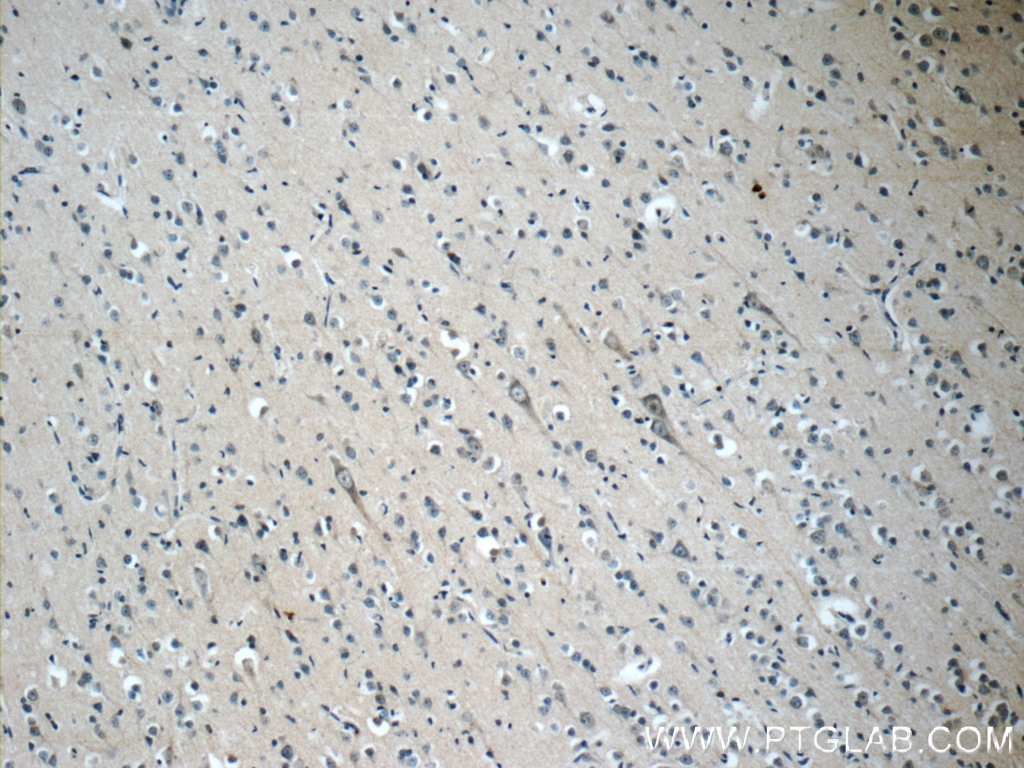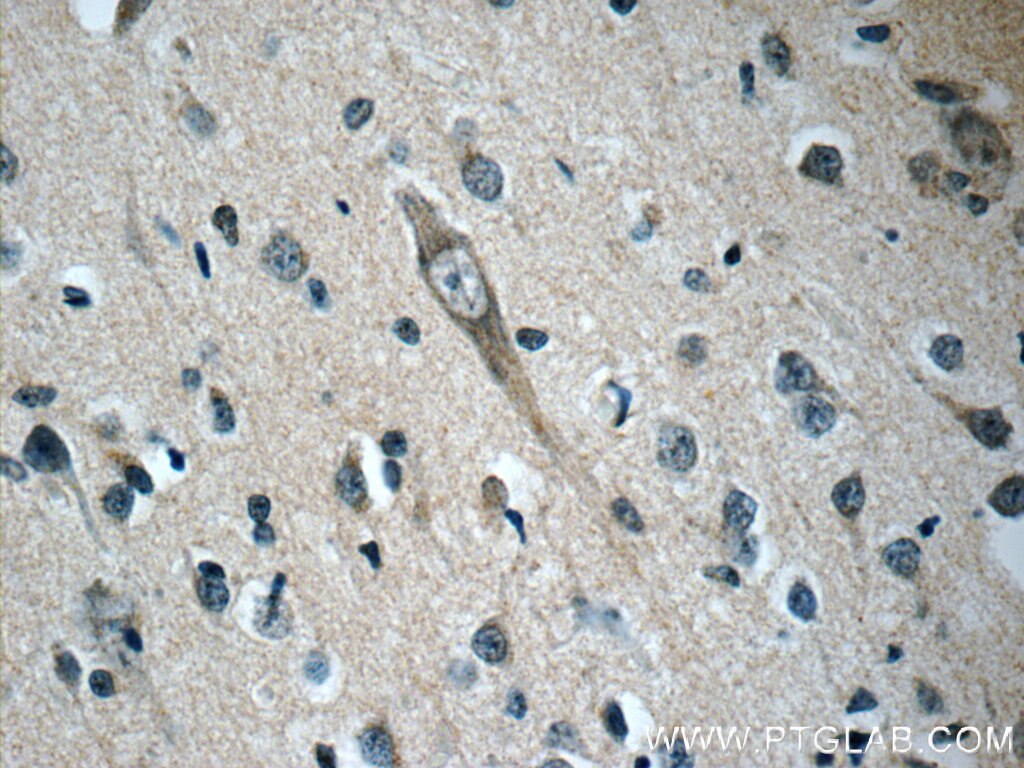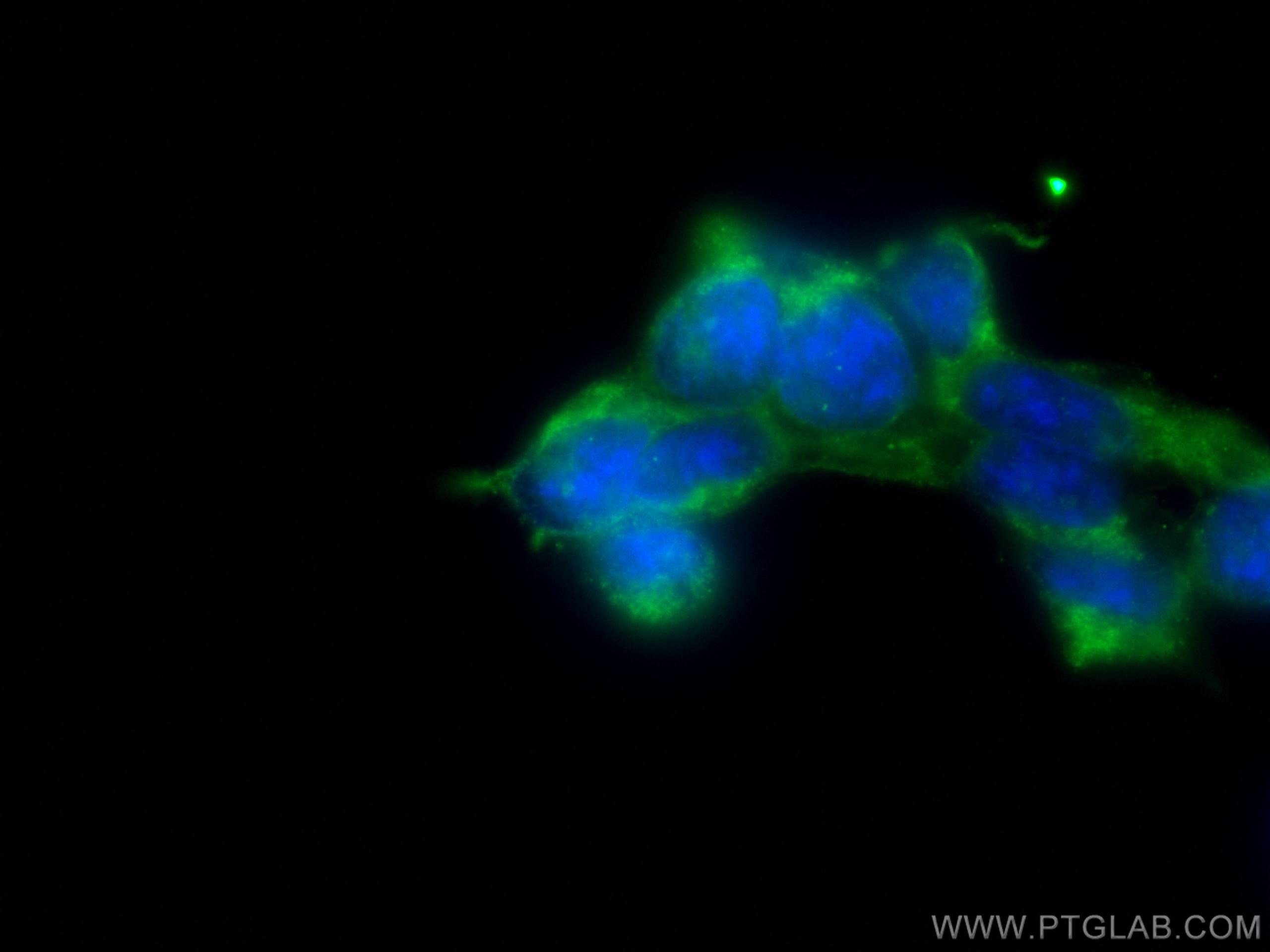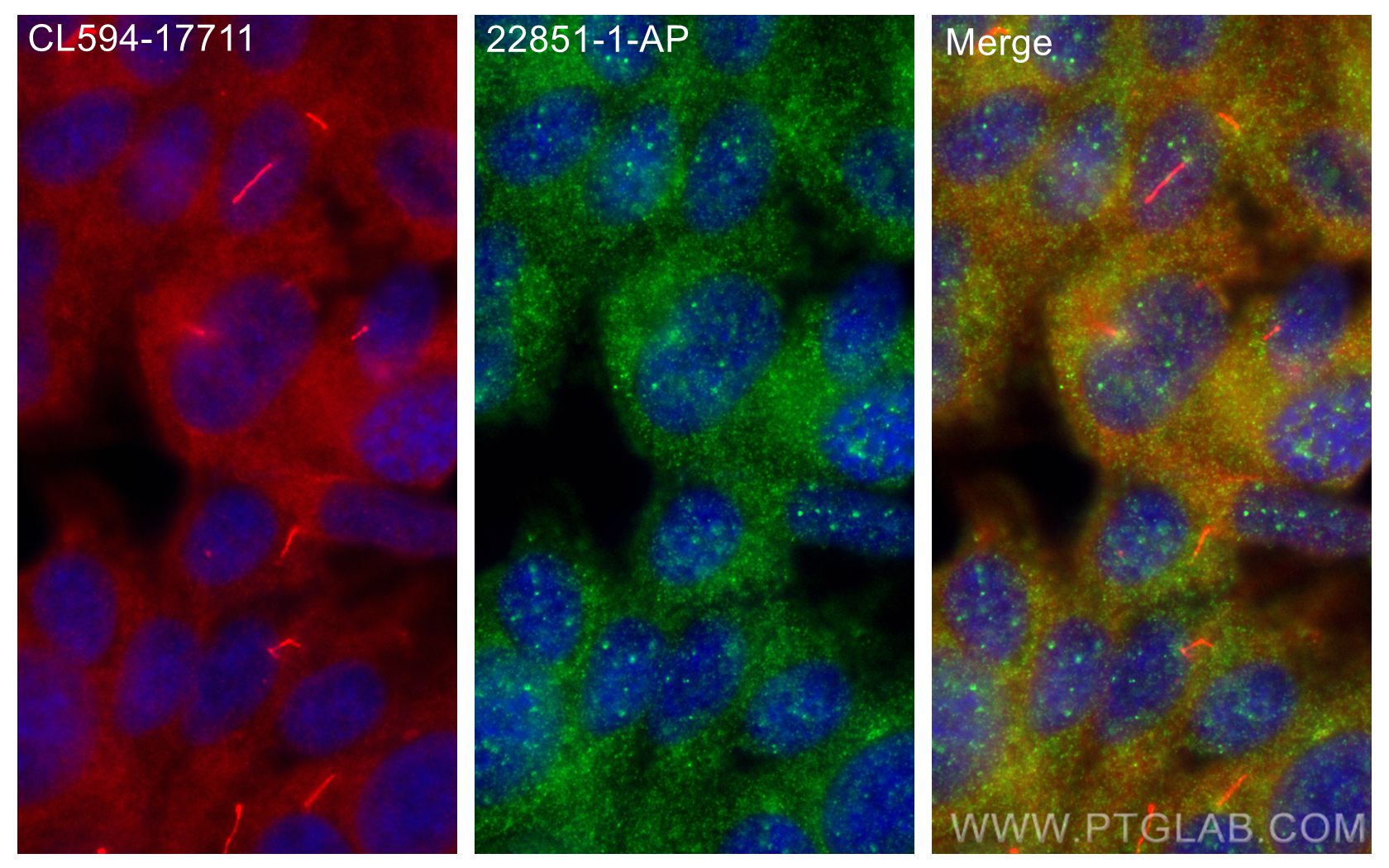Anticorps Polyclonal de lapin anti-OFD1
OFD1 Polyclonal Antibody for IHC, IF/ICC, ELISA
Hôte / Isotype
Lapin / IgG
Réactivité testée
Humain et plus (3)
Applications
WB, IHC, IF/ICC, ELISA
Conjugaison
Non conjugué
N° de cat : 22851-1-AP
Synonymes
Galerie de données de validation
Applications testées
| Résultats positifs en IHC | tissu cérébral humain il est suggéré de démasquer l'antigène avec un tampon de TE buffer pH 9.0; (*) À défaut, 'le démasquage de l'antigène peut être 'effectué avec un tampon citrate pH 6,0. |
| Résultats positifs en IF/ICC | cellules HEK-293, cellules hTERT-RPE1 |
Dilution recommandée
| Application | Dilution |
|---|---|
| Immunohistochimie (IHC) | IHC : 1:20-1:200 |
| Immunofluorescence (IF)/ICC | IF/ICC : 1:50-1:500 |
| It is recommended that this reagent should be titrated in each testing system to obtain optimal results. | |
| Sample-dependent, check data in validation data gallery | |
Applications publiées
| WB | See 4 publications below |
| IF | See 4 publications below |
Informations sur le produit
22851-1-AP cible OFD1 dans les applications de WB, IHC, IF/ICC, ELISA et montre une réactivité avec des échantillons Humain
| Réactivité | Humain |
| Réactivité citée | rat, Humain, poisson-zèbre, souris |
| Hôte / Isotype | Lapin / IgG |
| Clonalité | Polyclonal |
| Type | Anticorps |
| Immunogène | OFD1 Protéine recombinante Ag18898 |
| Nom complet | oral-facial-digital syndrome 1 |
| Masse moléculaire calculée | 1012 aa, 117 kDa |
| Poids moléculaire observé | 110-120 kDa |
| Numéro d’acquisition GenBank | BC096344 |
| Symbole du gène | OFD1 |
| Identification du gène (NCBI) | 8481 |
| Conjugaison | Non conjugué |
| Forme | Liquide |
| Méthode de purification | Purification par affinité contre l'antigène |
| Tampon de stockage | PBS with 0.02% sodium azide and 50% glycerol |
| Conditions de stockage | Stocker à -20°C. Stable pendant un an après l'expédition. L'aliquotage n'est pas nécessaire pour le stockage à -20oC Les 20ul contiennent 0,1% de BSA. |
Informations générales
OFD1, also named CXorf5 and 71-7A, belongs to the OFD1 family. It has been implicated in several developmental syndromes, including a male-lethal X-linked dominant condition, Oral-Facial-Digital type 1 (OFD1) syndrome, X-linked recessiveSimpson-Golabi-Behmel syndrome type 2 (SGBS2), and Joubert syndrome and related disorders (JSRDs). It is a component of the centrioles controlling mother and daughter centrioles' length. It recruits to the centriole IFT88 and centriole distal appendage-specific proteins including CEP164. Involved in the biogenesis of the cilium, a centriole-associated function. OFD1 plays an important role in development by regulating Wnt signaling and the specification of the left-right axis. This antibody recognizes all the isoforms of OFD1. The 43 kDa is isoform 2. The ~80 kDa band is unknown.
Protocole
| Product Specific Protocols | |
|---|---|
| IHC protocol for OFD1 antibody 22851-1-AP | Download protocol |
| IF protocol for OFD1 antibody 22851-1-AP | Download protocol |
| Standard Protocols | |
|---|---|
| Click here to view our Standard Protocols |
Publications
| Species | Application | Title |
|---|---|---|
Nat Commun Coupling bimolecular PARylation biosensors with genetic screens to identify PARylation targets. | ||
PLoS Biol Acute inhibition of centriolar satellite function and positioning reveals their functions at the primary cilium. | ||
Biochem Biophys Res Commun BIX-01294-induced autophagy regulates elongation of primary cilia. | ||
Oncol Lett Abnormal accumulation of OFD1 in endometrial cancer with poor prognosis inhibits ciliogenesis. | ||
Cell Biosci IK is essentially involved in ciliogenesis as an upstream regulator of oral-facial-digital syndrome ciliopathy gene, ofd1 |
Avis
The reviews below have been submitted by verified Proteintech customers who received an incentive for providing their feedback.
FH Elisa (Verified Customer) (06-15-2022) | HEK293 cells stained for Hoechst (DNA marker, in green), OFD1 (mother centriole distal appendage marker, in magenta) and PCNT (pericentriolar matrix marker, in green). HEK293 cells were plated on Poly-lysine coated coverslips and fixed in cold methanol for 2' at -20C. Cells were then rehydrated with PBS for 5'. Membrane permeabilization was then performed with 0.1% Triton + 0.1% Tween +0.01%SDS in PBS for 5'. Cells were finally incubated with blocking buffer (5% BSA+ 0.1% Tween in PBS) for 30' at RT. Primary antibody was diluted in blocking buffer 1:200 and incubated for 1h at room temperature. Alexa-555-Anti-rabbit was used as secondary antibody (1:600 dilution) (1h at room temperature). OFD1 recognises mother centriole.
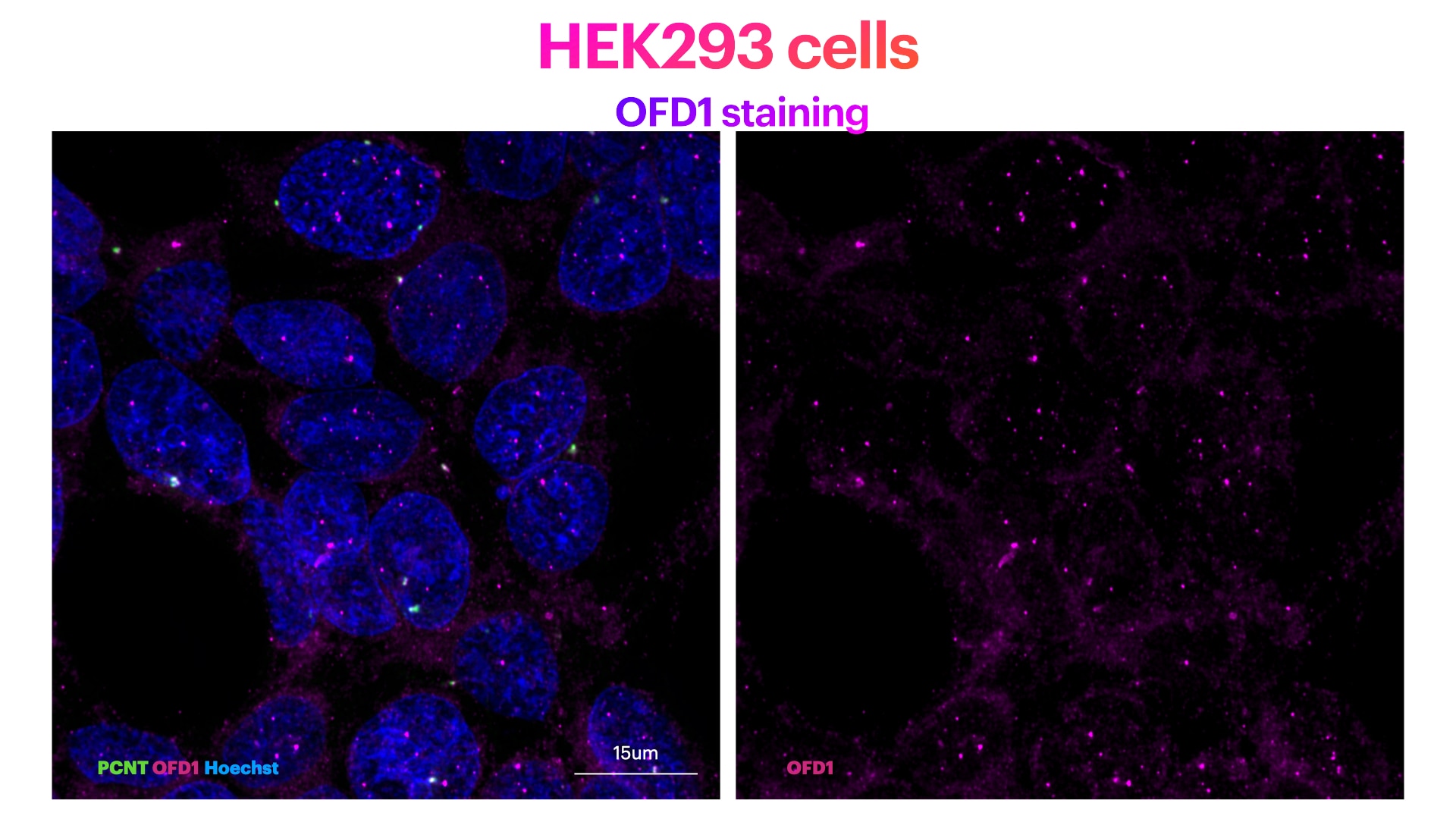 |
FH Sarah (Verified Customer) (02-16-2021) | Works very well for detection of OFD1 in HEK 293T cells
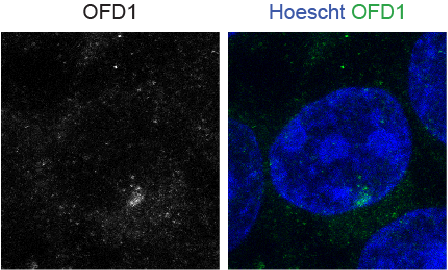 |
